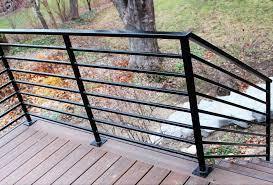Balconies are a great addition to any home, providing a space to relax and enjoy the outdoors. However, it’s important to remember that balconies can also pose a safety risk, particularly for families with young children. Choosing the right balcony railing is crucial to ensuring the safety of your family. In this blog, we’ll discuss some key factors to consider when selecting a balcony railing for your family’s safety.
Regulations and Building Codes The first thing to consider when choosing a balcony railing is whether it complies with local regulations and building codes. Building codes vary from state to state, and it’s essential to ensure that your railing meets all relevant safety standards. For example, the height of the railing, the spacing between the balusters, and the strength of the material are all regulated by building codes. The importance of regulations and building codes cannot be overstated when it comes to selecting a balcony railing for your home or building. Building codes are regulations that dictate the minimum standards for the design, construction, and safety of buildings and structures. These codes are put in place to ensure the safety and well-being of the people who will occupy the building.
When it comes to balcony railings, building codes are particularly important because they specify the height, spacing, and strength requirements for the railing. For example, in the United States, the International Building Code (IBC) requires that balcony railings be at least 42 inches high for residential buildings and 36 inches high for commercial buildings. The spacing between the balusters (the vertical posts that support the railing) must be no more than four inches apart, and the railing must be able to withstand a certain amount of force without collapsing or breaking.
By adhering to building codes and regulations, you can ensure that your balcony railing is safe and meets the minimum safety standards required by law. This is particularly important for families with young children or elderly individuals who may be more vulnerable to falls or accidents. A sturdy, well-designed balcony railing can provide peace of mind and prevent serious injuries or accidents.
Furthermore, complying with building codes can also help you avoid legal and financial liability in case of accidents or injuries related to your balcony railing. If your railing does not meet the minimum safety requirements specified by building codes, you could be held responsible for any injuries or damages that result from its failure.
In summary, building codes and regulations are crucial when selecting a balcony railing for your home or building. They provide important safety guidelines and ensure that your railing meets the minimum safety standards required by law. By complying with these regulations, you can ensure the safety of your family and avoid legal and financial liabilities.
Material and Durability The material used for the balcony railing is another critical factor to consider. Common materials used for balcony railings include wood, metal, glass, and vinyl. It’s essential to choose a material that is durable and can withstand the elements, particularly if you live in an area with harsh weather conditions.
Visibility and Maintenance Visibility and maintenance are also important considerations when choosing a balcony railing. If you want an unobstructed view of your surroundings, then glass or cable railing might be the best option. However, these materials require more maintenance than other materials such as wood or metal. Consider the level of maintenance you’re willing to commit to before choosing a railing material.
Spacing Between Balusters The spacing between balusters is another critical factor to consider when choosing a balcony railing. The spacing should be narrow enough to prevent children from slipping through but wide enough to allow a clear view of the surroundings. The appropriate spacing will depend on the age of your children and their size.
Handrails Handrails are an essential component of balcony railings. They provide support and stability when using the stairs or standing on the balcony. The handrail should be sturdy and easy to grip, particularly for young children or elderly individuals.
Aesthetics While safety is the primary concern when choosing a balcony railing, aesthetics are also an essential consideration. The railing should complement the style of your home and enhance its curb appeal. Consider the design, color, and finish of the railing to ensure that it matches the overall aesthetic of your home.
Conclusion Choosing the right balcony railing is crucial to ensuring the safety of your family. It’s important to consider local regulations and building codes, material and durability, visibility and maintenance, spacing between balusters, handrails, and aesthetics. By taking all these factors into account, you can select a balcony railing that provides the necessary safety while enhancing the beauty of your home.


Comments are closed.